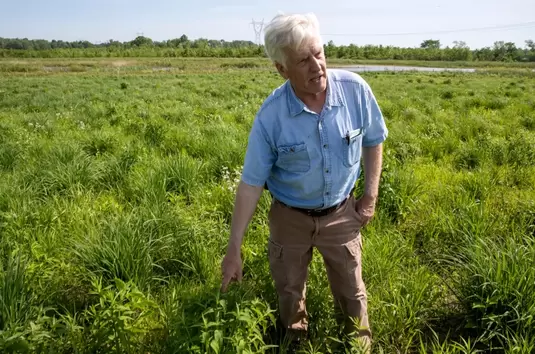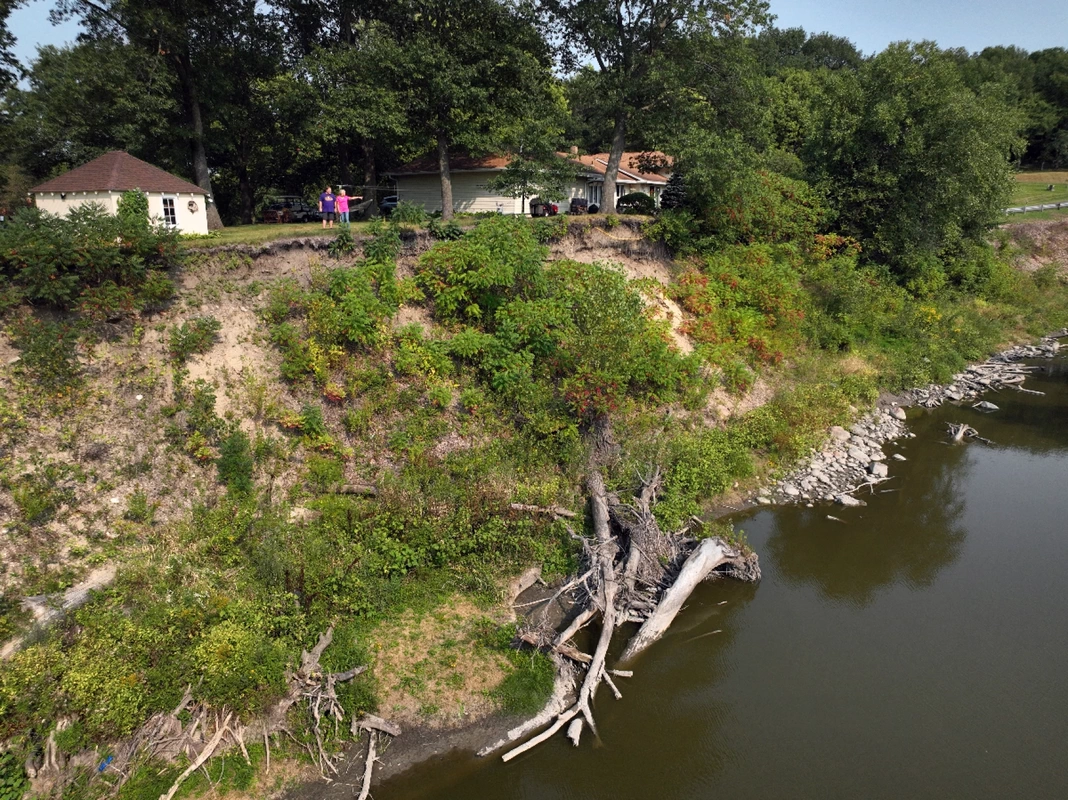|
By Chloe Johnson, Minneapolis Star Tribune; Erin Jordan, The Gazette; Sarah Bowman, Indianapolis Star Published October 13, 2022 at 4:00 AM CDT This article is re-published here with permission from the Mississippi River Basin Ag & Water Desk at the University of Missouri. The full article can be accessed at this link.  Farmers are dealing with more and heavier rainfall events throughout the Upper Midwest. Some farmers install drainage tiles and trenches to handle the water, but that can lead to soil erosion and flooding downstream. Corn was just starting to tassel across much of the Midwest, including fields in southern Indiana, a golden crown signaling the end of the season. But while most farmers were preparing for harvest, Ray McCormick was climbing back into his tractor to re-drill his soybeans. The southwest Indiana farmer had to drill soybeans in August – for a second time last year, having already lost his spring-planted corn crop – after yet another heavy rain flooded his river-bottom field. “My dad used to say that after July 10, ‘You’re kidding yourself trying to plant,’” said McCormick, who was trying to produce a crop for the landlords who own these fields. McCormick’s delayed planting is one example of how a changing climate – and the rains that come with it – are transforming farm country in the Mississippi River watershed. A hotter atmosphere is causing rain to fall in harder bursts, pushing back planting seasons and drowning crops. At the same time as human-driven climate change is juicing precipitation, Corn Belt farming practices such as installing underground drainage tiles and leaving fields bare after harvest are changing how water moves across the landscape and into waterways. That runoff eventually makes its way south, carrying sediment as well as pollution that contributes to the hypoxic, or oxygen-free, “dead zone” in the Gulf of Mexico. “There is no part of the water cycle we haven’t altered,” said Carrie Jennings, research and policy director with the Minnesota nonprofit advocacy group Freshwater. In Minnesota, flows in the Mississippi River rose 24% in seven decades, according to a 2016 report. Flows have doubled in the Minnesota River, which carries sediment and pollution from the state’s southern farm country into the Mississippi, according to a 2017 study from the Minnesota Pollution Control Agency. In Indiana, along the Wabash River just upstream from McCormick, flows have increased by at least a third in the last century, according to a report from the Purdue Climate Change Impacts Center. More than 100 U.S. Geological Service stations in Indiana show increased streamflow over the past 30 years. Similar trends of heavier rains and increased flows can be seen across the Midwest region. All that water has to go somewhere. With a changing climate, the farms of the future will look different, experts say. How communities adapt will determine what kind of farming they can do. “This rain isn’t going away,” said Jennifer Kanine, the director of natural resources for the Pokagon Band of Potawatomi, which has worked to restore wetlands in northwest Indiana’s agricultural areas. “We need to start working with it instead of fighting it,” she continued. “We need to ask, how can we best manage all this water, because we’ve compromised the system so much already.” Want to read more about erosion-caused mayhem along the Minnesota? Read the full article at this link. This story is part of When It Rains, a special series from the Mississippi River Basin Ag & Water Desk. Next month, LWV UMRR blog will re-publish the third article in this series - To Stay or To Go: Increased Flooding Forces Towns to make Hard Choices.
4 Comments
4/27/2023 11:48:08 am
Such a nice read. Thanks for sharing this one!
Reply
2/13/2024 12:53:16 am
I enjoy the content on this site. It's both informative and interesting.
Reply
6/19/2024 03:28:37 am
I appreciate the wonderful information on this website. Hoping for more in the future!
Reply
7/15/2024 02:05:09 am
Very useful tips, thank you! They will definitely come in handy.
Reply
Leave a Reply. |
| LWV Upper Mississippi River Region | UMRR blog |

 RSS Feed
RSS Feed